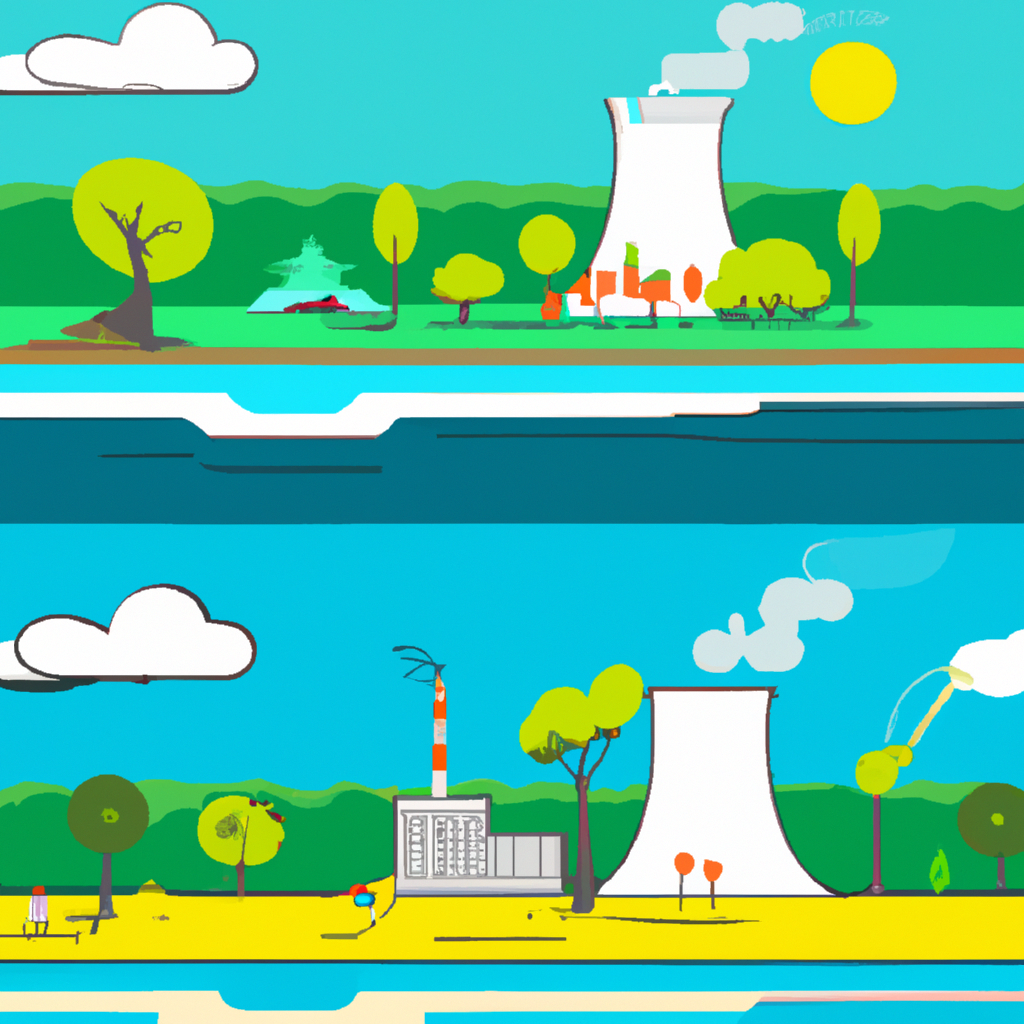Nuclear energy is a controversial topic that generates a lot of misinformation and confusion. While it’s true that nuclear energy has some risks, it’s also true that it’s one of the safest and cleanest energy sources available today. In this article, we’ll explore the facts and fiction surrounding nuclear energy and its impact on health.

The Basics of Nuclear Energy
Nuclear energy is produced through a process called nuclear fission, which involves splitting an atom’s nucleus into two smaller nuclei. This process releases a huge amount of energy, which can then be used to generate electricity. Unlike fossil fuels, nuclear energy doesn’t produce greenhouse gases or air pollution, making it a clean energy source.
The Risks of Nuclear Energy
While nuclear energy is a clean energy source, it’s not without risks. The biggest risk associated with nuclear energy is the potential for accidents, such as the Chernobyl disaster in 1986 and the Fukushima disaster in 2011. These accidents caused significant damage to the environment and human health.
However, it’s important to note that these accidents were caused by human error and not by the technology itself. Nuclear power plants are designed with multiple safety systems and redundancies to prevent accidents, and new technologies are constantly being developed to improve safety.
Another risk associated with nuclear energy is the potential for nuclear weapons proliferation. The same technology used to generate nuclear energy can also be used to create nuclear weapons. However, countries that have nuclear energy programs are subject to international inspections and safeguards to prevent the spread of nuclear weapons.
The Benefits of Nuclear Energy
Despite the risks associated with nuclear energy, it has several benefits that make it an important part of the world’s energy mix. For one, nuclear energy is one of the most reliable and efficient energy sources available. Nuclear power plants can operate continuously for up to two years without refueling, providing a constant source of energy.
Nuclear energy is also a low-carbon energy source that doesn’t contribute to climate change. In fact, nuclear energy has prevented the release of billions of tons of carbon dioxide into the atmosphere since the 1970s. Additionally, nuclear energy is not affected by weather or other external factors, making it more resilient than other energy sources.
The Impact of Nuclear Energy on Health
One of the biggest concerns about nuclear energy is its impact on human health. While nuclear accidents can have significant health impacts, the overall impact of nuclear energy on health is relatively low. In fact, studies have shown that nuclear energy is one of the safest energy sources available, with fewer deaths per terawatt-hour of energy produced than fossil fuels.
The main health risk associated with nuclear energy comes from radiation exposure. Radiation exposure can cause cancer and other health problems, but the risk is relatively low for people living near nuclear power plants. In fact, people living near nuclear power plants are exposed to less radiation than people living near coal-fired power plants.
Conclusion
In conclusion, nuclear energy is a safe and clean energy source that has the potential to play an important role in meeting the world’s energy needs. While there are risks associated with nuclear energy, these risks are manageable and can be minimized through proper safety measures and regulations.
It’s important to separate fact from fiction when it comes to nuclear energy and to make informed decisions based on the available evidence. By doing so, we can ensure that nuclear energy is used responsibly and safely for the benefit of all.






